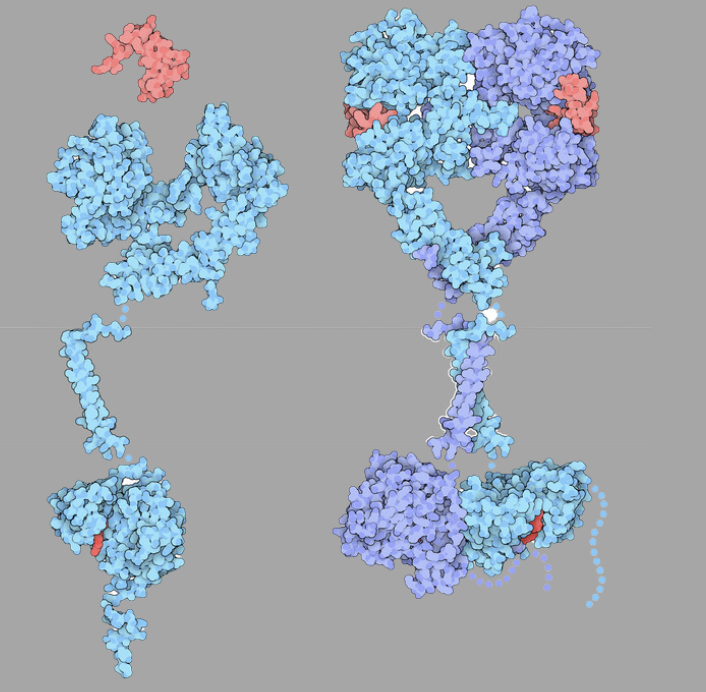MARIPOSA-2: A Study of Amivantamab and Lazertinib in Combination With Platinum-Based Chemotherapy Compared With Platinum-Based Chemotherapy in Patients With Epidermal Growth Factor Receptor (EGFR)- Mutated Locally Advanced or Metastatic Non- Small Cell Lung Cancer After Osimertinib Failure
 By Dr. Anam Kamal
By Dr. Anam Kamal
Epidermal growth factor receptor (EGFR) tyrosine kinase inhibitorsare effective in patients with metastatic non-small cell lung cancer (NSCLC) with sensitizing EGFR mutations; however, there are only a few treatment options available after progression on a 3rd generation EGFR-TKI. The current standard of care after progression on osimertinib, a 3rd generation TKI, is platinum doublet chemotherapy and has limited benefit. Amivantamab (Ami), an EGFR and MET bispecific humanized antibody, has shown clinical activity against tumors with primary activating EGFR mutations, EGFR resistance mutations, or MET pathway activation. Lazertinib (Laz) is an oral, brain-penetrant, 3rd generation EGFR TKI which, in combination with Ami has demonstrated clinically significant activity in osimertinib-relapsed disease 1. Ami and laz in combination with platinum-based chemotherapy after osimertinib failure may provide improved clinical benefits compared to chemotherapy alone.
MARIPOSA-2 is a randomized, open-label, Phase 3 study which evaluated the efficacy and safety of laz, ami, carboplatin, and pemetrexed (“LACP”; Arm A) vs carboplatin and pemetrexed (“CP”; Arm B) in participants with EGFR-mutated locally advanced or metastatic non-squamous NSCLC following progression on or after osimertinib. A third treatment group received ami, carboplatin, and pemetrexed (“ACP”; Arm C) to assess the contribution of laz in the LACP. In total, 657 patients were randomized 2:2:1 (Arms A:B:C). Dual primary endpoints were progression-free survival (PFS) of ami-chemotherapy versus chemotherapy and ami-laz- chemotherapy versus chemotherapy. Secondary endpoints included objective response rate (ORR), overall survival (OS), intracranial PFS, and safety. Patients who developed hematologic toxicities in the ami-laz-chemo arm were switched over to receive a regimen starting laz after carboplatin completion.
The results of the study were presented at ESMO 2023. At a median follow-up of 8.7 months, the study demonstrated that the PFS was significantly improved with ami-chemo (HR, 0.48; 95% CI. 0.36-0.64) and ami-laz-chemo (HR.0.44; 95% CI, 0.35-0.56) compared to chemo (median PFS, 6.3 and 8.3 vs 4.2 mo, respectively; P-0.001 for both). ORR was 64% for ami-chemo and 63% for ami-laz-chemo, compared to 36% for chemo (P<0.001 for both). Interim OS at a median follow-up pf 8.7 months showed a hazard ratio of 0.77 (95% CI, 0.49-1.21) for ami-chemo versus chemo and HR of 0.96 (95% CI, 0.67-1.35) for ami-laz-chemo vs chemo. The median intracranial PFS was 12.5 months for ami-chemo and 12.8 months for ami-laz chemo versus 8.3 months for chemo (HR, 0.55 and 0.58; P-0.001 and P<0.001, respectively). The predominant adverse events in the ami-containing arms were hematologic, EGFR, and MET-related. Ami- chemo had lower rates of hematologic AEs than ami-laz-chemo.
In summary, both experimental arms, ami-chemo and ami-laz-chemo improved PFS, ORR, and intracranial PFS versus the current standard of care of chemotherapy alone. In our opinion, this trial is practice changing and provides two therapeutic options (ami-laz-chemo and ami-chemo), both with improved outcomes for patients with EGFR-mutated advanced NSCLC after they progress on Osimertinib.
REFERENCES
1. Cho, B.C., Kim, DW., Spira, A.I. et al. Amivantamab plus lazertinib in osimertinib-
relapsed EGFR-mutant advanced non-small cell lung cancer: a phase 1 trial. Nat Med 29,
2577–2585 (2023). https://doi.org/10.1038/s41591-023-02554-7





